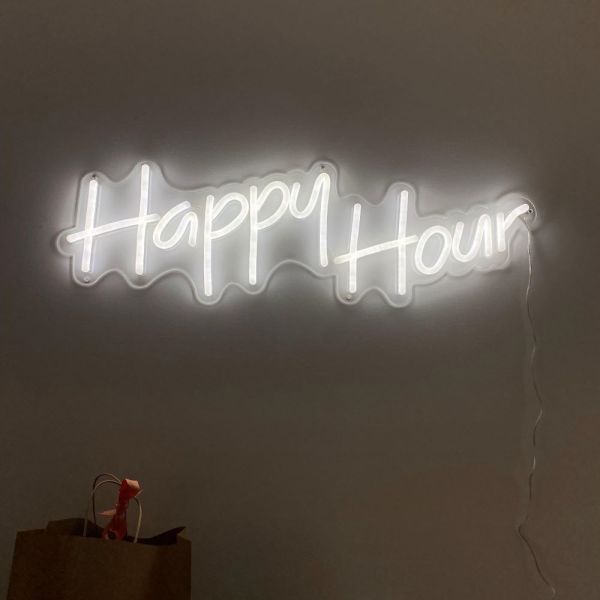New Advice To Picking Man Cave Signs
Wiki Article
What Is The Difference Between Bar Signs In Size?
Based on their intended usage as well as their design aesthetics, location and, bar signs are different in their size. The following are the ways that different sizes affect bar signs with regard to functionality and design. Large Signs
The purpose of the arrow is to attract the attention of others and serve as a focal point.
Uses: Exterior signs such as main branding signs or feature walls.
The placement is typically located above the entrances, the walls, or even outside the bar. This will draw in patrons.
Examples: huge neon signs vintage-style signs, mural-type signs.
2. Medium Signs
Use for display purposes: to show information or enhance the appearance of a space without dominating it.
Applications: menu boards, displays for promotions and directional signs.
Location: Located in a position that is easy to view, but not overwhelming for example, behind the bar, above seating areas or on walls with features.
Some examples: medium-sized signs for daily specials; steel signs with bar's logo, or themed decorative signs.
3. Small Signs
Useful: To add subtle decorative elements or give specific details.
Table signs are used to indicate table settings as well as small decorative objects or labels.
Placement: On tables or shelves, or inside displays where close-up views are desired.
For example: table number signs or framed quotes.
Size Considerations
Visibility
Large Signs: They are made to be visible from a distance from a distance, which makes them perfect for attracting pedestrians and establishing a bar's presence.
Medium Signs They meet the demand for information while maximizing space. They do this without overwhelming the decor.
Small Signs - Ideal for information or details which is visible. They can be set on tables or at eye level to improve the experience of patrons.
Proportion
Signs that are big must be sized in proportion to the space available. This helps avoid overwhelming smaller areas. Ideal for large or open areas.
Medium Signs: Perfect for use in the interior They can be positioned anyplace.
Small Signs: Ideal way to add detail, and they can be easily incorporated into smaller spaces.
Impact
Large-sized signs makes a bold and imposing statement. This can be an important factor in branding. It is often employed to set the atmosphere for the bar.
Medium Signs Creates an equilibrium between visibility and decor, contributing to the overall ambience while conveying vital information.
Small Signs (Signs): Adds detail and charm to a visual experience.
Practicality
Because of their size, large signs can cost a lot.
Medium Signs offer greater flexibility in design, and are also easier to set up.
Small signs are perfect for dynamic environments, such as bars that frequently change their menus or promotions.
Functionality
Large Signs: Mainly used to draw attention and increase visibility.
Medium Signs: Both decorative and functional, they offer essential information while adding aesthetics.
Small Signs are mostly functional and offer details. They also add to an overall theme or style.
The ideal size for an appropriate bar sign is dependent on its purpose, arrangement of the space and the impression desired by the patrons. The balance is important to ensure the sign's contribution to the bar atmosphere and operational requirements. View the top rated garden bar signs tips for blog tips including bar signs for home, home bar pub signs, the staying inn bar sign, hanging tavern sign, personalised pub, pub bar signs, outdoor home bar signs, personalised pub signs for sale, bar signs, personalised bar signs and more.

Durability Is A Key Factor In Determining The Bar's Longevity.
The durability of bar signs may vary according to the materials used the construction, location and material and the purpose for which they are intended. Here are some bar signs that vary in the durability. Material
Metal: Signs made of metals, like steel, aluminum, and other metals, are strong, resistant to weathering and are suitable for outdoor use.
Signs made of solid wood can be sturdy, but they require some care, particularly if they are used outdoors.
Acrylic: Acrylic is light and durable, yet resilient to break. It is also able to be exposed to the elements.
Neon/LED Signs: Neon is fragile and susceptible to damage. LED signs are, however are tougher and more energy-efficient.
2. Weather Resistance
Outdoor Signs. The materials and the coatings used must be resistant to corrosion, fading and water damage.
Indoor Signs: Although they are not being exposed to harsh weather conditions, indoor signs should still be resistant to humidity, temperature fluctuations, and wear and wear and.
3. Construction
Signs with strong frames and reinforced corners are more durable.
Sealing Electrical Components. Signs with sealed components (for lighting signs) are less prone to damage caused by water.
4. Maintenance Requirements
Low Maintenance: Bar owners will prefer to use signs that only require periodic cleaning or only minimal maintenance.
Signs that are high maintenance The signs that require intricate designs, costly or delicate materials, and special maintenance can be costly.
5. Location
Indoor Signs: Because indoor signs are typically less exposed to environmental risks the requirements for their durability could be lower than those of outdoor signs.
Outdoor Signs. Outdoor signs should be more durable to resist the sun's rays, rain and winds.
6. Impact Resistance
Signs indicating high-traffic areas or Locations where They May be Impacted (e.g. bars that are crowded) must be constructed of durable materials that resist denting and scratching.
Signs with Protective Surfaces Signs that are laminated or coated with protection materials are less susceptible to damage caused by stains vandalism, or scratches.
7. Longevity
Longevity : Signs that last can be used for many years without deteriorating significantly which results in a significant ROI.
For short-term use: Signs made for temporary promotions and events may not be as durable or long-lasting as permanent signage.
8. Lighting
Lighting Components - In order to guarantee longevity and durability the signs that are illuminated with neon or LED lighting should be made of high-quality components.
9. Environmental Impact
Signs made out of recycled or sustainable materials may be more sustainable to the environment while still providing durability and function.
10. Customization
Signs that are customized: Signs that allow customisation may have varying longevity based on the materials used and manufacturing techniques employed.
Durability comes with many advantages
Durability: Durable signage requires less frequent maintenance and replacement, reducing costs over the long run.
Brand Image High-quality, durable signs reflect the positive image of your establishment and show professionalism.
Customer satisfaction: In good condition signs contribute to the satisfaction of customers and improve the ambiance in the bar.
In assessing factors such as material, construction and location requirements Bar owners are able to choose a signage solution that are durable enough to stand up to the harsh conditions in which they operate. They can also add value as time passes. Have a look at the best discover more here about bar signs for home for website info including garden bar signs, cocktail bar sign, personalised cocktail sign, personalised pub signs for garden, personalised pub signs for sale, novelty bar signs, staying inn sign, sign for garden bar, home pub signs, outdoor personalised bar sign and more.

What Are The Distinctions Between Bar Signposts And Regulations?
Signs for bars are subject to a myriad of rules enforced by state, local and federal authorities to ensure public safety, aesthetic standards, and adherence to Zoning laws. There are a few distinctions between bar signs and their regulations. Size and Positioning Regulations
Zoning law: This is a set or rules that dictates where signs can be placed and their height, size and distances from the property line, road or other nearby structures.
Historic Districts: Signs may be limited to preserve the historic character of specific districts. This includes restrictions regarding size, design, and material.
2. Illumination Restrictions
Light Pollution - Regulations can restrict the brightness and color of illuminated signs to protect the atmosphere at night and limit light pollution.
Safety: Signs near roadways and other areas should be designed to minimize glare or distractions which could be dangerous to pedestrians or motorists.
3. Signage content
Alcohol Advertising: Alcohol advertisements are restricted in certain jurisdictions. They prohibit images or content which may be attractive to minors, or promote excessive drinking.
Health Warns: Certain laws might require that signage include warnings about the dangers of drinking alcohol or smoking cigarettes.
4. Historic Preservation Regulations
Signs in historic areas must be in line with their architectural style. This is typically performed by preservation boards or commissions.
Material and Design Signs that are considered to be historically significant may have restrictions on the materials used or the style and color scheme.
5. Sign Permitting Process
Permit Conditions: Bar owners need to be granted permits prior to putting up or altering signs. This could require the submission of plans, payment of fees, and obtaining approval by local authorities.
Code Compliance - Signs should meet building codes, regulations for safety in the event of fire, as well as standards for accessibility to ensure accessibility and safety for people with disabilities.
6. Sign Repair and Removal
Maintenance requirements: It is the bar's responsibility to keep their signage in good working order. This includes ensuring they're structurally sound, safe, and comply with all regulations.
Abandoned Signs - Laws may regulate the removal of abandoned and dilapidated signage to avoid blight while keeping the appearance of the area around it.
7. Digital Signage Regulations
Content Restrictions: Laws can determine the content that appears on digital signage, excluding certain types of content such as flashing lights or offensive imagery.
Limits to operation: Regulations could restrict the intensity, speed or frequency with which digital signs change to minimize visual clutter.
8. Penalties and Enforcement
Inspections: Local authorities inspect signs periodically to make sure they're in compliance with the regulations for signage. They will issue citations when violations are found.
Penalties: For non-compliance, penalties may include fines or citations. They could also include orders to remove signs or modify them, or even legal actions.
9. Sign Variance Process
Bar owners can apply for a variance to allow them to break from the standard regulations for signs. The owner must justify their request and demonstrate that the change will not cause any negative impact on safety for the public.
Public Input: Certain issues may require public hearings or input from members of the community, neighboring property owners, or business associations.
10. Community Engagement and Input
Public Consultation - Certain communities include community members as part of the design and application of signage regulations, by conducting public consultations or surveys.
Community Benefits : Sign regulations could include provisions to promote local businesses, or to revitalize the neighborhood.
In understanding and adhering to signage regulations, bar owners can ensure that their signage enhances the appearance of their establishment, improve the overall appearance of the community, and comply with legal requirements, minimizing the chance of being fined, penalties, or legal disputes. Read the best go here for site tips including home pub signs, personalised cocktail sign, small pub signs, bar wall signs, personalised outdoor bar signs, design a pub sign, personalised sign for bar, garden bar sign personalised, large bar signs, personalised signs for home bar and more.
:fill(white)/https://www.oliverbonas.com/static/media/catalog/product/s/h/shot15_barneon_resized_1.jpg)